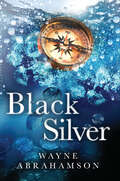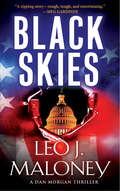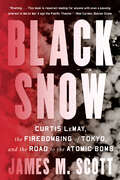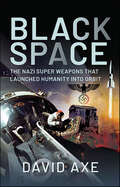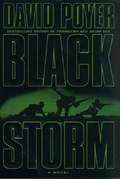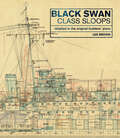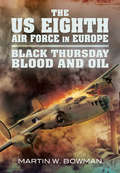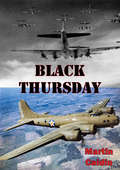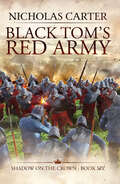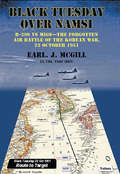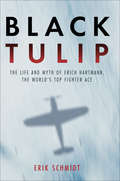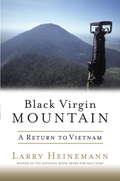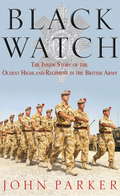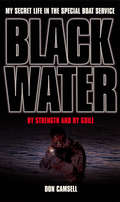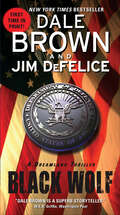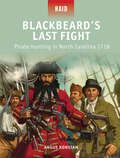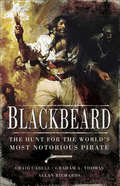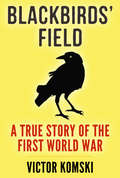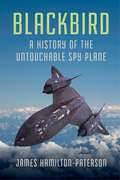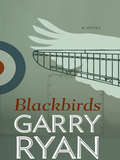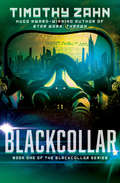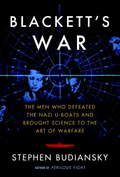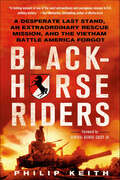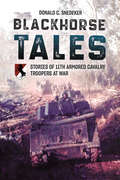- Table View
- List View
Black Silver
by Wayne Abrahamson Wayne AbrahamsonJoseph Havok has no idea of the troubles he&’ll face when he and his business partner decide to follow up on a rumor and go off in search of a lost cache of WWII silver near an island in the South China Sea. The two men travel by dive boat to Terumbu Island, unaware of the others they will soon encounter, including an American CIA station chief, an environmental-studies professor, and the captain of the professor&’s research vessel. But Terumbu holds other secrets?, something far more dangerous and much more valuable than the island&’s cache of old silver. Nicholai Anisimova, a former Russian army intelligence officer, is the leader of a group of dissatisfied comrades who threaten international order in their quest to transform Siberia into a new Russia. However, in order to purchase arms and equipment to begin their revolution and occupation of Siberia, the group will need money. To finance the recovery of resources from a sunken Japanese submarine, Anisimova secures the sponsorship of a Chinese industrialist who does not trust the Russians and decides to monitor the recovery himself. Havok and his partner soon find themselves involved in a conflict, refereed by an unknown, seldom-seen island hermit that escalates into a bitter struggle between survivors and pirates. What begins as a simple holiday for two men on a treasure hunt ends with a far-ranging battle that spills beyond the borders of the South China Sea, embroiling world leaders and placing the population of a nation at risk. &“A thrilling and fun adventure built on excellent use of details sprinkled with comedic relief.&” — Kendra Kennedy, Senior Archaeologist &“Abrahamson&’s excellent use of technical details trickled throughout the storyline provides for an authentic, and fast-paced, adventure at every turn of the page.&” — Siska Williams, Senior Archaeologist
Black Skies (A Dan Morgan Thriller #3)
by Leo J. Maloney"A ripping story--rough, tough, and entertaining." --Meg Gardiner"Maloney is the new master of the modern spy game." --Mark SullivanIn his most explosive thriller to date, Black Ops veteran Leo J. Maloney goes deep inside a vast global conspiracy bent on the annihilation of the United States--by land, by sea, and by air. . .Black SkiesA team of Navy SEALs wiped out in a surprise attack. A motorcade of dignitaries ambushed--and the U.S. Secretary of State abducted. But this is no random act of terror. A vision of evil unprecedented in scope has been triggered. The enemy will not stop until the skies over America are black with death and destruction. CIA veterans Dan Morgan and Peter Conley--code names Cobra and Cougar--are America's last chance at averting an unthinkable scenario of bloodshed . . . Praise for Leo J. Maloney's Novels "Everything a thriller reader wants."--Ben Coes on Silent Assassin"This is one outstanding thriller."--John Gilstrap on Termination Orders"High-powered. . .tense and terrifying!"--Hank Phillippi Ryan on Termination Orders93,500 Words
Black Snow: Curtis Lemay, The Firebombing Of Tokyo, And The Road To The Atomic Bomb
by James M. Scott"Riveting.…This book is required reading for anyone with even a passing interest in World War II and the Pacific Theater." —Bob Carden, Boston Globe Seven minutes past midnight on March 10, 1945, nearly 300 American B-29s thundered into the skies over Tokyo. Their payloads of incendiaries ignited a firestorm that reached up to 2,800 degrees, liquefying asphalt and vaporizing thousands; sixteen square miles of the city were flattened and more than 100,000 men, women, and children were killed. Black Snow is the story of this devastating operation, orchestrated by Major General Curtis LeMay, who famously remarked: “If we lose the war, we’ll be tried as war criminals.” James M. Scott reconstructs in granular detail that horrific night, and describes the development of the B-29, the capture of the Marianas for use as airfields, and the change in strategy from high-altitude daylight “precision” bombing to low-altitude nighttime incendiary bombing. Most importantly, the raid represented a significant moral shift for America, marking the first time commanders deliberately targeted civilians which helped pave the way for the atomic bombing of Hiroshima and Nagasaki five months later. Drawing on first-person interviews with American pilots and bombardiers and Japanese survivors, air force archives, and oral histories never before published in English, Scott delivers a harrowing and gripping account, and his most important and compelling work to date.
Black Space: The Nazi Superweapons That Launched Humanity Into Orbit
by David AxeOrbital fortresses poised to fry entire cities with no warning using giant mirrors. Bombers that take off from Earth, punch through the thin border between the atmosphere and vacuum and take advantage of that lofty altitude to speed across the globe on missions of mass destruction. These and other exotic orbital weapons were under consideration, or even active development, in the early decades of humanity’s push into space. And no wonder. The era of frantic, dueling, American and Soviet space-exploration efforts -- which stretched from the end of World War II to the United States’ successful Moon landing in July 1969 -- had its roots in Nazi Germany, a country that pinned its hope for global conquest on equally ambitious superweapons. In the decades following World War II, the top scientists in the U.S. and Soviet space programs were ex-Nazis—most notably rocket-designer Wernher von Braun, who sided with the Americans. The basic technologies of the space race derived from Nazi superweapons, in particular von Braun’s V-2 rocket. But orbital war never broke out in those heady decades of intense space competition. It’s possible to triangulate the moment the seemingly inevitable became evitable. July 29, 1958. The day U.S. president Dwight Eisenhower reluctantly signed the law creating the National Aeronautics and Space Administration. Starting that day, the U.S. military gradually ceded to NASA, a civilian agency, leadership of American efforts in space. Even von Braun, once a leading advocate of orbital warfare, went along. Space-based superweapons and their architects, and the high-stakes politics that reined them in, are the subject of this brief book.
Black Storm (A Dan Lenson Novel #7)
by David PoyerFrom the bestselling author of Tomahawk and China Sea, a heart-stopping thriller of Marine Corps special operations-the men whose bravery and sacrifice brought victory in the desert. Six days before America invades Iraq, Saddam Hussein issues an ultimatum: if coalition forces cross the border, he will turn Israel into "a crematorium." Belatedly realizing how far Saddam's weapons program has progressed, U.S. intelligence agencies suspect he's concealing either a crude nuclear device or missiles loaded with lethal chemical or biologic agents. A quickly assembled marine reconnaissance team gets the assignment for Operation signal Mirror. In the four days left before the ground war begins, Gunnery Sergeant Marcus Gault and his marine-army-navy team must land in Iraq, locate Saddam's ultimate deterrent, and target it for destruction with U.S. cruise missiles. After a terrifying helicopter insertion, the team moves like shadows across a mobilized and blacked-out Iraq-- toward Baghdad, and a rendezvous with a mysterious resistance member called "Shamir." Captured and tortured by Iraqi intelligence en route, Lieutenant Commander Dan Lenson, the targeting officer, must decide whether the secret he carries is worth the life of his teammates-- and his own. But even as the remnants of the team reach their objective, they discover that bombing it would unleash a horror more terrifying than they ever imagined. Now what's left of Urban Assault Team 12-four U.S. Marines, a U.S. Army biological warfare scientist, a British commando, and a Navy Tomahawk officer-- will have to deal with the situation themselves.
Black Swan Class Sloops: Detailed in the Original Builders' Plans
by Les BrownAn illustrated reference featuring the superbly drawn plans for these highly effective anti-submarine ships. The technical details of British warships were recorded in a set of plans produced by the builders on completion of every ship. Known as the &“as fitted&” general arrangements, these drawings represented the exact appearance and fitting of the ship as it entered service. Intended to provide a permanent reference for the Admiralty and the dockyards, these plans were drawn with exquisite skill in multi-colored inks and washes that represent the acme of the draftsman&’s art. Today they form part of the collection of the National Maritime Museum at Greenwich, which is using the latest scanning technology to make digital copies of the highest quality. This book is one of a series based entirely on these drafts, depicting famous warships in unprecedented detail—complete sets in full color, with many close-ups and enlargements that make every aspect clear. Captions point the reader to important features, and an introduction covers the background to the design. This volume is devoted to the sloops of the Black Swan class and its improved derivatives, widely regarded as the &“Rolls-Royce&” of Second World War convoy escorts. Heavily armed and superbly equipped for their role, they were among the most effective anti-submarine ships of the battle in the Atlantic. The design was gradually improved and this book uses plans of four selected ships to chart that development. These comprise: Black Swan as built; Flamingo as modified later; Starling, the single most successful U-boat hunter of the war, as in 1943; and Amethyst, as refitted after her clash with Chinese communists on the Yangtze in 1949.
Black Thursday Blood and Oil: Black Thursday Blood And Oil (The US Eighth Air Force in Europe #2)
by Martin W. BowmanThis book describes the period when the American daylight offensive faltered and nearly failed and recalls the terrible losses suffered by Liberators on the low-level attack on the Ploesti oilfields in Rumania and by the B–17s on the notorious Schweinfurt and Regensburg raids which entered 8th Air Force folklore as Black Thursday. Fascinating anecdotes, eye-witness accounts and the hard-won experiences of the battle-scarred American fly-boys reveal the grim realities of air combat at four miles high above enemy occupied Europe, Berlin and the Ruhr. Grown up in the war they paint a revealing picture as only they can. The Mighty Eighth was an air force of hard-fighting, hard-playing fliers who suffered more casualties than the entire US Marine Corps in the Pacific Campaign. Here, in their own words are stories of survival and soul-numbing loss, of fly-boys who came together to fight an air war of the ferocity that had never been fought on such a vast scale before. While RAF Bomber Command was waging war at night, the 8th Air Force B–17 Flying Fortresses and B-24 Liberators bombed by day in a 24-hour round the clock campaign. This is also a partly a strategic history with a behind-the-scenes look at deployment of the bomber groups and the fighter escorts that would eventually become their salvation on the interminable deep penetration raids into the Greater Reich.
Black Thursday [Illustrated Edition]
by Martin CaidinIncludes 15 photographs, 23 drawings and 2 mapsThe battle fought on Black Thursday stands high in the history of American fighting men. It will be long remembered, like the immortal struggles of Gettysburg, St. Mihiel and the Argonne, of Midway and the Bulge and Pork Chop Hill. Tens of thousands of our airmen fought in desperate battles in the sky during World War II. From China to the Aleutians, from Australia through the Philippines and across the Southwest Pacific, through the Central Pacific, in Africa and the Mediterranean, and across the length and breadth of Europe, American fliers engaged in combat with the Germans, the Japanese, the Italians.In all these battles one stands out among all the others for unprecedented fury, for losses suffered, for courage. This was the battle on Black Thursday, Mission 115 of the VIII Bomber Command from bases in England to the savagely defended German city of Schweinfurt. It was a battle in which we suffered unprecedented losses, and a battle that we cannot in honesty remember as having produced the results we had hoped for, or that hurt the enemy's war effort as much as we had believed.Yet it is an aerial struggle remembered with great pride, for it demanded the utmost in courage, in skill, in carrying on the fight in the face of bloody slaughter. All these things, and more, make up the story of Black Thursday, of this book.
Black Tom's Red Army (The Shadow on the Crown)
by Nicholas CarterRival soldiers face off in the final battle of the First English Civil War in this historical adventure. It is more than a year since printer&’s apprentice turned Parliamentarian soldier William Sparrow and his royalist rival Hugo Telling last came to blows. Parliament&’s armies, bruised beaten and humiliated despite their ever increasing numerical advantage, have been reconstituted as the New Model Army. Sparrow, veteran of a dozen battles, sieges and scrapes, is expecting to be offered a commission in &“Black Tom&’s Red Army&”—but his past has caught up with him. As the political and religious divides which have convulsed the country for three years grow more bitter by the day, the New Model Army heads north to challenge the King&’s field army, commanded by the brilliant but dangerously compulsive Prince Rupert. Two worlds will collide at Naseby, where history will be made . . . Black Tom&’s Red Army is the final thrilling installment of The Shadow on the Crown series. Praise for the writing of Nicholas Carter: &“Ringing to the clash of blades and the roar of cannon and pungent with the whiff of gunpowder . . . A storming read.&” —Peterborough Telegraph &“Carter&’s stories are in a league of their own.&” —Bristol Observer
Black Tuesday Over Namsi: B-29s vs MIGs—The Forgotten Air Battle of the Korean War, 23 October 1951
by Lt. Col. Earl. J. McGillA gripping true account of warfare in the skies over Korea, when American bombers and North Korean jet fighters would change the course of air combat. On October 23, 1951, an hour and a half before sunrise, nine B-29s of the 307th Bombardment Wing took off from Kadena Air Force Base in Okinawa, Japan, on a bombing mission against Namsi—a North Korean airfield under construction in the heart of the shooting gallery known as MiG Alley. In under six hours, they would engage in a battle that would forever change the conduct of strategic aerial bombardment. Six of the nine aircrafts were shot down; the highest percentage of US bombers ever lost on a major mission. Unfortunately, this event that many experts consider the epic air battle of the Korean War—and perhaps the greatest jet engagement in the history of aerial warfare—has become another forgotten fight in a forgotten war. Here, Earl J. Hill presents the facts and circumstances of the mission from first briefing to final landing using historical documents, firsthand accounts of aircrew members and ground personnel from both sides, and photographs of the mission and its aftermath. This is the story of those who clashed in the skies above Namsi, the events leading up to it, and Black Tuesday’s historical impact on the aerial warfare tactics.
Black Tulip: The Life and Myth of Erich Hartmann, the World's Top Fighter Ace
by Erik SchmidtThis myth-busting military biography reveals the true story of the legendary WWII German flying ace—and how his story was manipulated during the Cold War.Over the course of 1,404 wartime missions, Luftwaffe fighter pilot Erich Hartmann claimed a staggering 352 airborne kills. His storied career contains all the dramas you would expect: frostbitten fighter sweeps over the Eastern Front, drunken forays to Hitler’s Eagle’s Nest, a decade of imprisonment in the wretched Soviet POW camps, and further military service during the Cold War. Then, just as Hartmann’s career was faltering, he was adopted by a network of writers and commentators deeply invested in his reputation. These men, mostly Americans, published celebratory stories about Hartmann and his elite fraternity of Luftwaffe pilots. With each dogfight tale put into print, Hartmann’s legacy became loftier and more secure, and his complicated service in support of Nazism faded away. Black Tulip digs beneath this one-dimensional account of Hartmann’s life, revealing a man who was neither a full-blown Nazi nor an impeccable knight.
Black Virgin Mountain: Return to Vietnam
by Larry HeinemannIn 1967 Larry Heinemann was sent to Vietnam as an ordinary soldier. It was the most horrific year of his life, truly altering him--and his family--forever. In his powerful memoir, Heinemann returns to Vietnam, riding the train from Hanoi to Ho Chi Minh city and confronting the memories of his war year. Black Virgin Mountain confirms Heinemann's legendary plain-spoken reputation as one of the essential chroniclers of our war in Vietnam.
Black Watch
by John ParkerThe Black Watch is one of the finest fighting forces in the world and has been engaged in virtually every worldwide conflict for the last three centuries. Named after the dark tartan of the soldiers' kilts, it is the oldest Highland regiment. As part of the British army, their first battle abroad was in Flanders in 1745 but the regiment soon moved to North America to fight the French, and then shared the capture of Montreal, the Windward Islands and Martinique. The American War of Independence saw the regiment once again in America, fighting horrific battles and eventually storming Fort Washington in 1776. Since then the regiment has held its own from the Napoleonic Wars to the Indian mutiny to Iraq. The Black Watch is the UK's most decorated regiment, combining the proud history and tradition of an organisation that has been soldiering for over 250 years.
Black Watch
by John ParkerThe Black Watch is one of the finest fighting forces in the world and has been engaged in virtually every worldwide conflict for the last three centuries. Named after the dark tartan of the soldiers' kilts, it is the oldest Highland regiment. As part of the British army, their first battle abroad was in Flanders in 1745 but the regiment soon moved to North America to fight the French, and then shared the capture of Montreal, the Windward Islands and Martinique. The American War of Independence saw the regiment once again in America, fighting horrific battles and eventually storming Fort Washington in 1776. Since then the regiment has held its own from the Napoleonic Wars to the Indian mutiny to Iraq. The Black Watch is the UK's most decorated regiment, combining the proud history and tradition of an organisation that has been soldiering for over 250 years.
Black Water: By Strength and By Guile
by Don CamsellDon Camsell joined the men in black of the SBS in 1974. From the deserts of Oman to the hills of Port Stanley, from the bottom of Gibraltar harbour to the deep, cold, black waters of Loch Long and from the QE2 to the back alleys of Belfast, his new role demanded that Don fought in just about every theatre of war - overt or covert.
Black Wolf: Black Wolf (Dreamland Thrillers #12)
by Dale Brown Jim DeFeliceWhen Russia unleashes an army of genetically enhanced assassins, the Dreamland team reunites to fight back in this military techno-thriller.The warriors of Dreamland have moved on. Some, like Breanna and Zen Stockard, to positions of power and influence; others, like Danny Freah and Nuri Lupo, into Whiplash, a cutting-edge combination of brain and brawn. Tasked by the President to handle the country’s most deadly and sensitive jobs, the elite SpecWarfare unit marries muscle to technological prowess.But can even Whiplash stand up to a covert Russian army of genetically enhanced assassins known only as the Wolves? They’re said to be nearly invisible and virtually unstoppable, endowed with super-human strength and endurance. But when Danny Freah and company are about to stumble on an even darker and deadlier secret: the most ferocious Wolf of them all comes from the heart of Dreamland itself—and Danny saw him die more than a decade before.
Blackbeard's Last Fight - Pirate Hunting in North Carolina 1718
by Angus Konstam Mark StaceyIn April 1713 the War of the Spanish Succession came to an end. During the conflict hundreds of privateers - licenced pirates - preyed on enemy shipping throughout the Caribbean. These privateers now found themselves out of a job, and many turned to piracy. One of theme was Edward Teach - more popularly known as "Blackbeard". He joined the pirates in New Providence (now Nassau) in the Bahamas, and by early 1717 he had become a pirate captain. From then on he caused havoc off the North American seaboard, in the West Indies and off Honduras, before appearing off Charleston, South Carolina in May 1718. He blockaded this major port for a week, an act that made Blackbeard the most notorious pirate of his day. He then "downsized" - deliberately running his flagship aground near Beaufort, North Carolina, before sailing north in a small sloop to seek a pardon from the colony's governor, Charles Eden. For late June onwards, Blackbeard lived in the colony's tiny capital of Bath Town, and pretended to have turned his changed his ways. However, he also established a den on nearby Ocracoke Island in North Carolina's outer banks, and used this as a base for pirate forays into the waters of the Virginia and Delaware. He then used Bath Town as a clearing house for his plunder.In the neighbouring colony of Virginia, Governor Alexander Spotswood decided to take action. Two British warships were anchored in Virginia's James River, and he and their captains began planning a raid - an attack designed to deal with Blackbeard once and all. In November 1718 Lieutenant Maynard was sent south down the coast with two hired sloops, and orders to seek out and destroy Blackbeard's sloop, the Adventure. At the same time a land expedition was mounted, led by Captain Brandt of the Royal Navy. His men "invaded" North Carolina, and marched on Bath Town, hoping to corner the pirates and capture their stockpile of plunder. On Friday 22nd November the sloops Ranger and Jane rounded Ocracoke Island, and attacked the Adventure. In the small but hard-fought action that followed Blackbeard's vessel was boarded, and the pirate captain was slain. While Maynard sailed home to Virginia with Blackbeard's severed head hanging from his bowsprit, Captain Brandt seized Bath Town, captured what pirates still remained at large, and then headed back in triumph to Williamsburg with his prisoners. Most of them would be hanged before the year was out. The attack on Blackbeard's lair was the largest anti-piracy operation of the "Golden Age of Piracy", and a textbook example of how to deal with the scourge of piracy.
Blackbeard: The Hunt for the World's Most Notorious Pirate
by Graham A. Thomas Craig Cabell Allan RichardsEdward Teach Blackbeard-is one of the legends of the so-called golden age of piracy. There have been so many accounts of his short, bloody career that it is hard to see him and his times in a clear historical light. This new study looks for the man behind the legend, and it gives a vivid insight into the nature of piracy and the naval operations that were launched against it.The narrative focuses on the roles played by the Governor of Virginia Alexander Spotswood who masterminded the pursuit of Blackbeard, and Lieutenant Robert Maynard of HMS Pearl who led the pursuit and finally cornered Teach and his crew and, after a vicious fight, saw him killed.In vivid detail, it reveals how the hunt for Blackbeard was orchestrated, how he was tracked down, and the parts played in the drama by the larger-than-life leading characters in this extraordinary story. This freshly researched study of the pursuit of the notorious pirate and his crew—and of the final fight in which Blackbeard lost his life—makes compelling reading.
Blackbird's Field: A True Story of the First World War
by Victor KomskiBlackbirds' Field, first published in 1934, recounts the author's experiences as a Serbian soldier (volunteering at age 16) in the First Balkan War of 1912-13, then again in World War I from 1914-18. Born into a good family in Montenegro, author Victor Komski (a pseudonym for Ilija Mimović) is initially happy to enter the fighting for his country, but becomes disillusioned by the horrors of the war; he suffers serious wounds and is captured and held in an Austrian prison camp, from which he manages to escape twice to join guerrilla forces. Returning home after six years of fighting, the author finds he has lost fourteen members of his family, his sweetheart has married another, and food is scarce in his destroyed city. Komski manages to survive and would eventually make his way to the United States. The title, Blackbirds' Field, refers to the site where the Turks crushed the Serb Empire in 1389 and, according to legend, fallen Serb soldiers were turned into blackbirds to spread news of the disaster.
Blackbird: A History of the Untouchable Spy Plane
by James Hamilton-PatersonThe fascinating story of the spy plane SR-71 Blackbird—the fastest manned aircraft in the history of aviation. The SR-71 Blackbird, the famed “spy” jet, was deliberately designed to be the world's fastest and highest-flying aircraft—and its success has never been approached since. It was conceived in the late 1950s by Lockheed Martin's highly secret 'Skunk Works' team under one of the most (possibly the most) brilliant aero designers of all time, Clarence “Kelly” Johnson. Once fully developed in 1964, the Blackbird represented the apogee of jet-powered flight. It could fly at well over three times the speed of sound above 85,000 feet and had an unrefueled range of 3,200 nautical miles. It flew with great success until 1999). Despite extensive use over Vietnam and later battlefields, not one was ever shot down (unlike the U2 in the Gary Powers incident). The Blackbird's capabilities seem unlikely ever to be exceeded. It was retired because its function can be performed by satellites—and in today's steady trend toward unmanned military aircraft, it is improbable that another jet aircraft of this speed and caliber will ever again be conceived.
Blackbirds: A Novel (Blackbirds Series #1)
by Garry Ryan"When young Sharon Lacey travels from Canada to England in the spring of 1940 in search of the father she never knew, she finds herself called upon to participate in a much larger and more dangerous mission. For at eighteen, she is a gifted flier in an England desperate for pilots to fend off the impending attack from Hitler’s Luftwaffe. In the months that follow, Sharon will be tested in ways that will affect the rest of her life—should she survive. With Blackbirds, award-winning mystery novelist Garry Ryan turns his hand towards historical fiction, vividly evoking the fear and uncertainty of wartime England, as well as the spirit of camaraderie and adventure shared by the men—and women—who stepped forward to defend it."
Blackcollar (The Blackcollar Series #1)
by Timothy ZahnA genetically enhanced fighting force may be humanity&’s only hope in this novel by the #1 New York Times–bestselling author of Star Wars: Thrawn. Decades after a successful invasion of Earth and the Terran Democratic Empire by the Ryqril—hostile, leathery-skinned aliens—resistance fighter Allen Caine is training for an undercover mission. He will assume the identity of an aide to the senate—part of the government that colludes with the invaders. But when the mission begins earlier than planned, Caine finds himself stuck on the off-planet outpost of Plinry with no idea of what awaits. He&’s responsible for the most important mission undertaken by the resistance in twenty years, and when the operation goes awry, Caine&’s only hope is to locate Plinry&’s so-called blackcollars—the elusive, martial arts–trained guerilla force whose wartime resistance efforts are legendary. With his life and the freedom of everyone in the TDE on the line, Caine&’s success will depend on whether or not he can find them. . . .
Blackett's War
by Stephen BudianskyThe exciting history of a small group of British and American scientists who, during World War II, developed the new field of operational research to turn back the tide of German submarines--revolutionizing the way wars are waged and won. In March 1941, after a year of unbroken and devastating U-boat onslaughts, the British War Cabinet decided to try a new strategy in the foundering naval campaign. To do so, they hired an intensely private, bohemian physicist who was also an ardent socialist. Patrick Blackett was a former navy officer and future winner of the Nobel Prize; he is little remembered today, but he and his fellow scientists did as much to win the war against Nazi Germany as almost anyone else. As director of the World War II antisubmarine effort, Blackett used little more than simple mathematics and probability theory--and a steadfast belief in the utility of science--to save the campaign against the U-boat. Employing these insights in unconventional ways, from the washing of mess hall dishes to the color of bomber wings, the Allies went on to win essential victories against Hitler's Germany. Here is the story of these civilian intellectuals who helped to change the nature of twentieth-century warfare. Throughout, Stephen Budiansky describes how scientists became intimately involved with what had once been the distinct province of military commanders--convincing disbelieving military brass to trust the solutions suggested by their analysis. Budiansky shows that these men above all retained the belief that operational research, and a scientific mentality, could change the world. It's a belief that has come to fruition with the spread of their tenets to the business and military worlds, and it started in the Battle of the Atlantic, in an attempt to outfight the Germans, but most of all to outwit them.
Blackhorse Riders: A Desperate Last Stand, an Extraordinary Rescue Mission, and the Vietnam Battle America Forgot
by Philip KeithThe true story of a US Army unit’s effort to rescue an outnumbered troop under heavy fire in Vietnam—and the thirty-nine-year odyssey to recognize their bravery.Winner of the 2013 Silver Medal in History from the Military Writer’s Society of AmericaFinalist, 2013 Colby AwardWinner of the 2012 USA Best Book Award for Military HistoryDeep in the jungles of Vietnam, Alpha Troop, 1st Squadron, 11th Armored Cavalry, the famed Blackhorse Regiment, was a specialized cavalry outfit equipped with tanks and armored assault vehicles. On the morning of March 26, 1970, they began hearing radio calls from an infantry unit four kilometers away that had stumbled into a hidden North Vietnamese Army stronghold. Outnumbered at least six to one, the eighty-seven-man American company was quickly surrounded, pinned down, and fighting for its existence.Captain John Poindexter, Alpha Troop’s twenty-five-year-old commander, realized that his outfit was the only hope for the trapped company. With the courage and determination that makes legends out of ordinary men, they effected a daring rescue and fought a pitched battle—at considerable cost. Many brave deeds were done that day, and Captain Poindexter tried to make sure his men were recognized for their actions.Thirty years later, Poindexter was made aware that his award recommendations and even the records of the battle had somehow gone missing. Thus began the second phase of this remarkable story: a “battle” to ensure that his brave men’s accomplishments would never be forgotten again.Praise for Blackhorse Riders“Keith’s compelling storytelling breathes life into the personalities involved, so that minute by minute, following both rescuers and rescued, you keep turning pages to find out who lives and who dies.” —Karl Marlantes, New York Times–bestselling author of Matterhorn and What It Is Like to Go to War“One of the finest and best-told combat stories to come out of Vietnam. . . . For those of us who were there, this is the kind of book we would be proud to pass on to our children.” —Nelson DeMille“A definite must-read.” —Booklist
Blackhorse Tales: Stories of 11th Armored Cavalry Troopers at War
by Don SnedekerWhen the U.S. Army went to war in South Vietnam in 1965, the general consensus was that counterinsurgency was an infantryman’s war; if there were any role at all for armored forces, it would be strictly to support the infantry. However, from the time the 11th Armored Cavalry Regiment arrived in country in September 1966, troopers of the Blackhorse Regiment demonstrated the fallacy of this assumption. By the time of Tet '68, the Army’s leadership began to understand that the Regiment’s mobility, firepower, flexibility, and leadership made a difference on the battlefield well beyond its numbers. Over the course of the 11th Cavalry’s five-and-a-half years in combat in South Vietnam and Cambodia, over 25,000 young men served in the Regiment. Their stories—and those of their families—represent the Vietnam generation in graphic, sometimes humorous, often heart-wrenching detail. Collected by the author through hundreds of in-person, telephone, and electronic interviews over a period of 25-plus years, these “war stories” provide context for the companion volume, The Blackhorse in Vietnam. Amongst the stories of the Blackhorse troopers and their families are the tales of the wide variety of animals they encountered during their time in combat, as well as the variable landscape, from jungle to rice paddies, and weather. Blackhorse Tales concludes with a look at how the troopers dealt with their combat experiences since returning from Vietnam. Between the chapters are combat narratives, one from each year of the Regiment’s five-and-a-half years in Southeast Asia. These combat vignettes begin on 2 December 1966, when a small column of 1st Squadron vehicles and troopers was ambushed on Highway 1 and emerged victorious despite being outnumbered. They go on to describe the one-of-a-kind crossing of the Dong Nai River on 25 April 1968, as the Blackhorse Regiment rode to the rescue during Mini-Tet 1968, and the 2nd Squadron's fight to clear the Boi Loi Woods in late April 1971.
